GE Profile 30 in. 5.6 cu. ft. Slide-In Gas Range with Self-Cleaning Convection Oven and Air Fry in Stainless Steel
-
( 9 Reviews )Rated 4.78 out of 5 based on 9 customer ratings09
Air fry healthier, crispier options with no preheat needed. Built-in WiFi controls oven functions on your smart device. A finish that makes it easy to keep your appliances clean.
-
Cafe 30″ Slide-In Electric Range CHS950P2MS1
Rated 4.33 out of 503Cafe 30″ Slide-In Electric Range CHS950P2MS1
Rated 4.33 out of 503 -
LG 6.3 cu. ft. Slide-In Gas Range with Probake Convection Oven in Stainless Steel
Rated 5.00 out of 510LG 6.3 cu. ft. Slide-In Gas Range with Probake Convection Oven in Stainless Steel
Rated 5.00 out of 510
GE Profile Appliances are built on the belief that modern life needs modern solutions. GE Profile Appliances are designed to make daily life simpler by incorporating Smart Home technology and cutting-edge features in every appliance. GE Profile’s sleek design and quality engineering will give your kitchen the most up-to-date look and the best innovative performance you’ve been looking for.
- No preheat air fry – with this air fryer right in the oven, you can cook healthier, crispier versions of your favorite foods, there’s no preheat required and it shortens the cook time because every minute counts
- Built-in WiFi – this smart oven features built-in WiFi so you can control oven functions with the SmartHQ app on your smart device
- Fingerprint resistant stainless – Easily wipe away smudges and fingerprints for a look that’s always sparkling clean
- Fit guarantee – this gas range will fit your existing 30″ cut-out, or GE appliances will help pay for modifications up to $300, see offer criteria and details
- Edge-to-edge cooktop – continuous, edge-to-edge cooktop give you a large cooking space and can handle any cookware
- Tri-ring burner – A versatile burner offers three different-sized flame rings on a single burner element, so it’s like having three burners in one
- Reversible grill and griddle – This extra-large, reversible griddle and grill combination lets you enjoy the best in cooking versatility
- Dual purpose center burner – This flexible gas cooktop burner lets you choose between round and oval burner shapes
- Backlit glass touch controls – Backlit touch controls give this oven a high-tech look with a display that disappears when not in use and reappears when touched
- Power boil burner – This 18,000-BTU power boil element produces intense heat to boil water fast
- Synchronized clocks and lights – Synchronize your oven and GE Appliances over-the-range microwave so that clocks are always matching and lights automatically come on when a burner is activated with Chef Connect
- True European Convection – This oven features True European Convection, an advanced convection system that uses a third heating element and fan for the highest level of heat and air circulation
- Never-scrub oven racks – These durable oven racks can be left in the oven during the self-clean cycle so you never have to scrub
- Precision temperature probe – An innovative temperature probe that helps you achieve the perfect level of doneness for oven favorites
- Self-clean with steam clean – This self-cleaning oven uses optional steam cleaning for light soils to clean the oven cavity with less heat and odor
- Limited 1-year entire appliance warranty
Additional information
| Depth With Door(s) Open 90 Degrees (In.) | 47.5 |
|---|---|
| Oven Interior Depth x Height x Width (in) | 20.625 x 19.5 x 24 |
| Product Depth x Height x Width (in) | 29.5 x 36.5 x 30 |
| Range Size | 30 in. |
| Certifications and Listings | ADA Compliant,CSA Certified,Star-K,UL Listed |
| Manufacturer Warranty | Limited 1-year entire appliance |
30 may refer to:
- 30 (number), the natural number following 29 and preceding 31
- one of the years 30 BC, AD 30, 1930, 2030
5 (five) is a number, numeral and digit. It is the natural number, and cardinal number, following 4 and preceding 6, and is a prime number. It has garnered attention throughout history in part because distal extremities in humans typically contain five digits.
Five is the third-smallest prime number, and the second super-prime, since its prime index is prime. Notably, 5 is equal to the sum of the only consecutive primes 2 + 3 and it is the only number that is part of more than one pair of twin primes, (3, 5) and (5, 7), also making it the first balanced prime with equal-sized prime gaps above and below it (of 2). 5 is the first safe prime where for a prime is also prime (2), and the first good prime, since it is the first prime number whose square (25) is greater than the product of any two primes at the same number of positions before and after it in the sequence of primes (i.e., 3 × 7 = 21 and 11 × 2 = 22 are less than 25). 11, the fifth prime number, is the next good prime, that also forms the first pair of sexy primes with 5. More significantly, the fifth Heegner number that forms an imaginary quadratic field with unique factorization is also 11 (and the first repunit prime in decimal, a base in-which five is also the first non-trivial 1-automorphic number).
Five is also the second Fermat prime, and the third Mersenne prime exponent, as well as the fourth or fifth Fibonacci number. It is also an Eisenstein prime (like 11) with no imaginary part and real part of the form . It is the first congruent number, as well as the length of the hypotenuse of the smallest integer-sided right triangle, making part of the smallest Pythagorean triple (3, 4, 5). The regular five-sided pentagon is the first regular polygon that does not tile the plane with copies of itself, and it is the largest face that a regular three-dimensional regular Platonic solid can have, as represented in the regular dodecahedron. In general, a conic curve will require five points in the same way that two points are needed to determine a line.
6 (six) is the natural number following 5 and preceding 7. It is a composite number and the smallest perfect number.
Cleaning is the process of removing unwanted substances, such as dirt, infectious agents, and other impurities, from an object or environment. Cleaning is often performed for aesthetic, hygienic, functional, safety, or environmental protection purposes. Cleaning occurs in many different contexts, and uses many different methods. Several occupations are devoted to cleaning.
Convection is single or multiphase fluid flow that occurs spontaneously due to the combined effects of material property heterogeneity and body forces on a fluid, most commonly density and gravity (see buoyancy). When the cause of the convection is unspecified, convection due to the effects of thermal expansion and buoyancy can be assumed. Convection may also take place in soft solids or mixtures where particles can flow.
Convective flow may be transient (such as when a multiphase mixture of oil and water separates) or steady state (see Convection cell). The convection may be due to gravitational, electromagnetic or fictitious body forces. Heat transfer by natural convection plays a role in the structure of Earth's atmosphere, its oceans, and its mantle. Discrete convective cells in the atmosphere can be identified by clouds, with stronger convection resulting in thunderstorms. Natural convection also plays a role in stellar physics. Convection is often categorised or described by the main effect causing the convective flow; for example, thermal convection.
Convection cannot take place in most solids because neither bulk current flows nor significant diffusion of matter can take place. Granular convection is a similar phenomenon in granular material instead of fluids. Advection is fluid motion created by velocity instead of thermal gradients. Convective heat transfer is the intentional use of convection as a method for heat transfer. Convection is a process in which heat is carried from place to place by the bulk movement of a fluid and gases.
Gas is one of the four fundamental states of matter. The others are solid, liquid, and plasma. A pure gas may be made up of individual atoms (e.g. a noble gas like neon), elemental molecules made from one type of atom (e.g. oxygen), or compound molecules made from a variety of atoms (e.g. carbon dioxide). A gas mixture, such as air, contains a variety of pure gases. What distinguishes gases from liquids and solids is the vast separation of the individual gas particles. This separation usually makes a colorless gas invisible to the human observer.
The gaseous state of matter occurs between the liquid and plasma states, the latter of which provides the upper-temperature boundary for gases. Bounding the lower end of the temperature scale lie degenerative quantum gases which are gaining increasing attention. High-density atomic gases super-cooled to very low temperatures are classified by their statistical behavior as either Bose gases or Fermi gases. For a comprehensive listing of these exotic states of matter, see list of states of matter.
An oven is a tool which is used to expose materials to a hot environment. Ovens contain a hollow chamber and provide a means of heating the chamber in a controlled way. In use since antiquity, they have been used to accomplish a wide variety of tasks requiring controlled heating. Because they are used for a variety of purposes, there are many different types of ovens. These types differ depending on their intended purpose and based upon how they generate heat.
Ovens are often used for cooking, where they can be used to heat food to a desired temperature. Ovens are also used in the manufacturing of ceramics and pottery; these ovens are sometimes referred to as kilns. Metallurgical furnaces are ovens used in the manufacturing of metals, while glass furnaces are ovens used to produce glass.
There are many methods by which different types of ovens produce heat. Some ovens heat materials using the combustion of a fuel, such as wood, coal, or natural gas, while many employ electricity. Microwave ovens heat materials by exposing them to microwave radiation while electric ovens and electric furnaces heat materials using resistive heating. Some ovens use forced convection, the movement of gases inside the heating chamber, to enhance the heating process, or, in some cases, to change the properties of the material being heated, such as in the Bessemer method of steel production.
In philosophy, the self is an individual's own being, knowledge, and values, and the relationship between these attributes.
The first-person perspective distinguishes selfhood from personal identity. Whereas "identity" is (literally) sameness and may involve categorization and labeling, selfhood implies a first-person perspective and suggests potential uniqueness. Conversely, "person" is used as a third-person reference. Personal identity can be impaired in late-stage Alzheimer's disease and in other neurodegenerative diseases. Finally, the self is distinguishable from "others". Including the distinction between sameness and otherness, the self versus other is a research topic in contemporary philosophy and contemporary phenomenology (see also psychological phenomenology), psychology, psychiatry, neurology, and neuroscience.
Although subjective experience is central to selfhood, the privacy of this experience is only one of many problems in the philosophy of self and scientific study of consciousness.
Stainless may refer to:
- Cleanliness, or the quality of being clean
- Stainless steel, a corrosion-resistant metal alloy
- Stainless Games, a British video game developer
- Stainless Broadcasting Company, a TV broadcaster based in Michigan, US
- Stainless Banner, the second national flag of the Confederate States of America
Steel is an alloy of iron and carbon with improved strength and fracture resistance compared to other forms of iron. Because of its high tensile strength and low cost, steel is one of the most commonly manufactured materials in the world. Steel is used in buildings, as concrete reinforcing rods, in bridges, infrastructure, tools, ships, trains, cars, bicycles, machines, electrical appliances, furniture, and weapons.
Iron is always the main element in steel, but many other elements may be present or added. Stainless steels, which are resistant to corrosion and oxidation, typically need an additional 11% chromium.
Iron is the base metal of steel. Depending on the temperature, it can take two crystalline forms (allotropic forms): body-centred cubic and face-centred cubic. The interaction of the allotropes of iron with the alloying elements, primarily carbon, gives steel and cast iron their range of unique properties. In pure iron, the crystal structure has relatively little resistance to the iron atoms slipping past one another, and so pure iron is quite ductile, or soft and easily formed. In steel, small amounts of carbon, other elements, and inclusions within the iron act as hardening agents that prevent the movement of dislocations.
The carbon in typical steel alloys may contribute up to 2.14% of its weight. Varying the amount of carbon and many other alloying elements, as well as controlling their chemical and physical makeup in the final steel (either as solute elements, or as precipitated phases), impedes the movement of the dislocations that make pure iron ductile, and thus controls and enhances its qualities. These qualities include the hardness, quenching behaviour, need for annealing, tempering behaviour, yield strength, and tensile strength of the resulting steel. The increase in steel's strength compared to pure iron is possible only by reducing iron's ductility.
Steel was produced in bloomery furnaces for thousands of years, but its large-scale, industrial use began only after more efficient production methods were devised in the 17th century, with the introduction of the blast furnace and production of crucible steel. This was followed by the Bessemer process in England in the mid-19th century, and then by the open-hearth furnace. With the invention of the Bessemer process, a new era of mass-produced steel began. Mild steel replaced wrought iron. The German states were the major steel producers in Europe in the 19th century. American steel production was centered in Pittsburgh, Bethlehem, Pennsylvania, and Cleveland until the late 20th century.
Further refinements in the process, such as basic oxygen steelmaking (BOS), largely replaced earlier methods by further lowering the cost of production and increasing the quality of the final product. Today more than 1.6 billion tons of steel is produced annually. Modern steel is generally identified by various grades defined by assorted standards organizations. The modern steel industry is one of the largest manufacturing industries in the world, but also one of the most energy and greenhouse gas emission intense industries, contributing 8% of global emissions. However, steel is also very reusable: it is one of the world's most-recycled materials, with a recycling rate of over 60% globally.

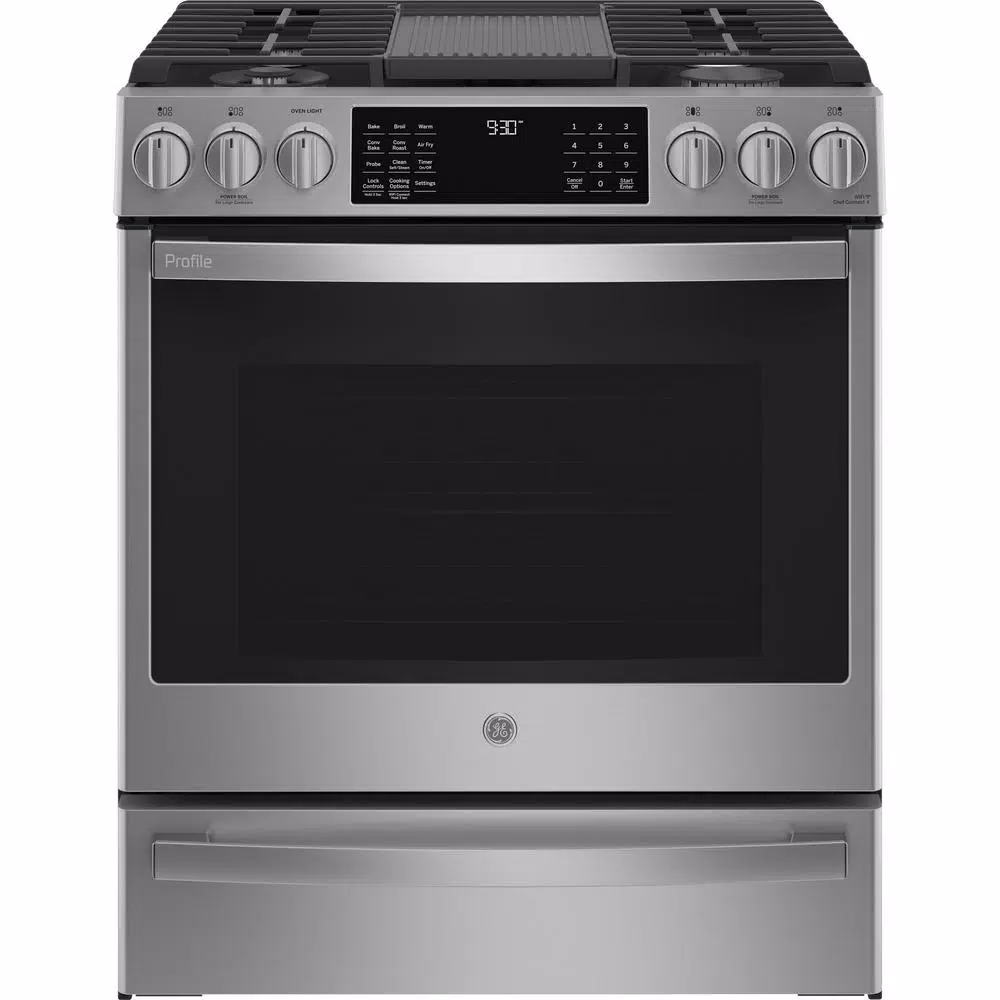
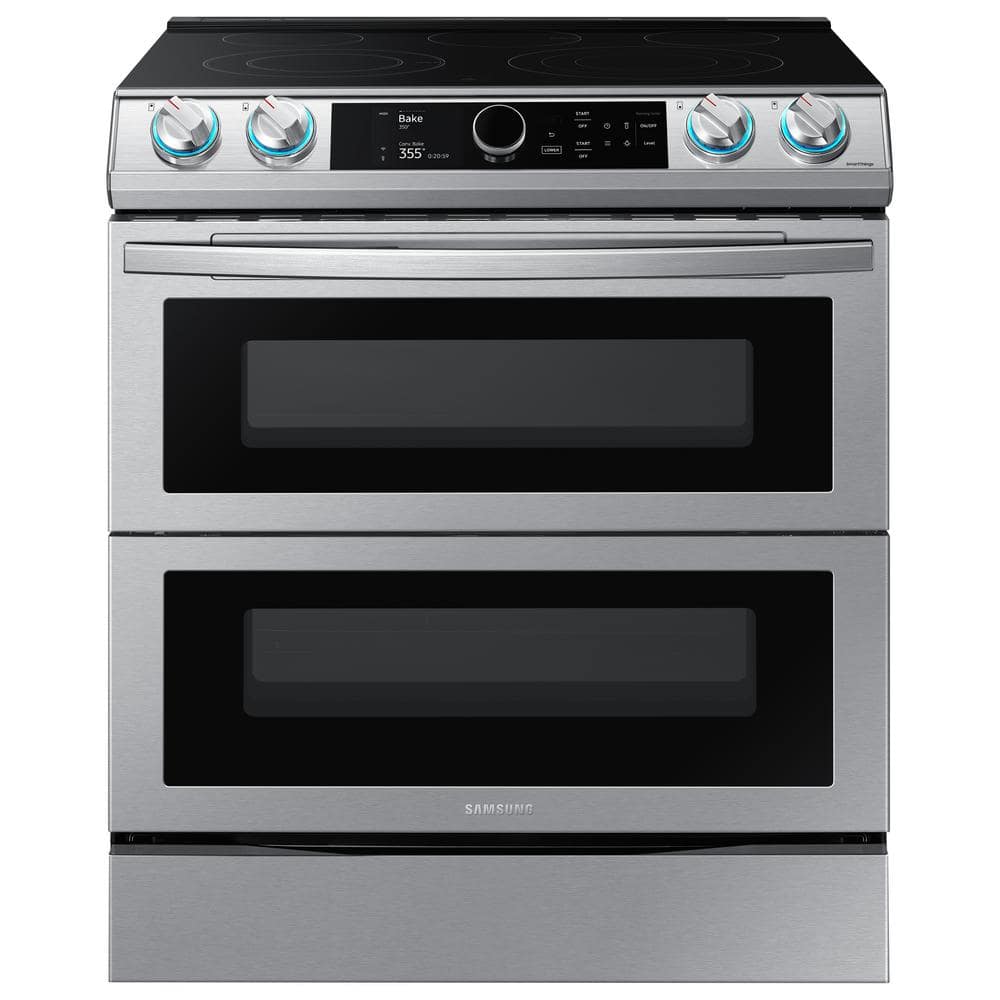
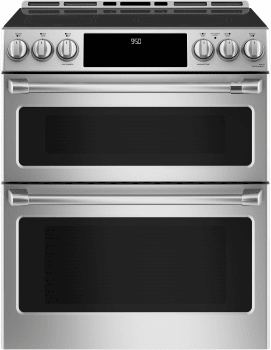
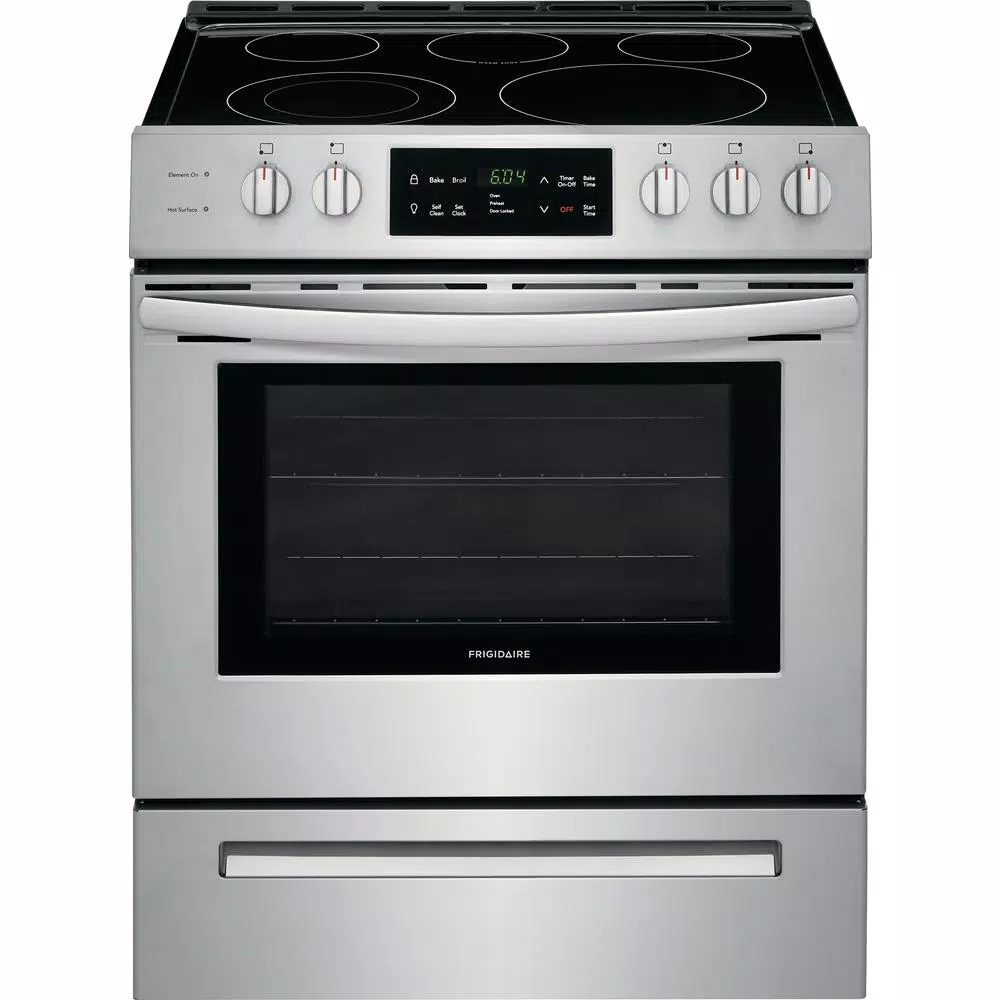
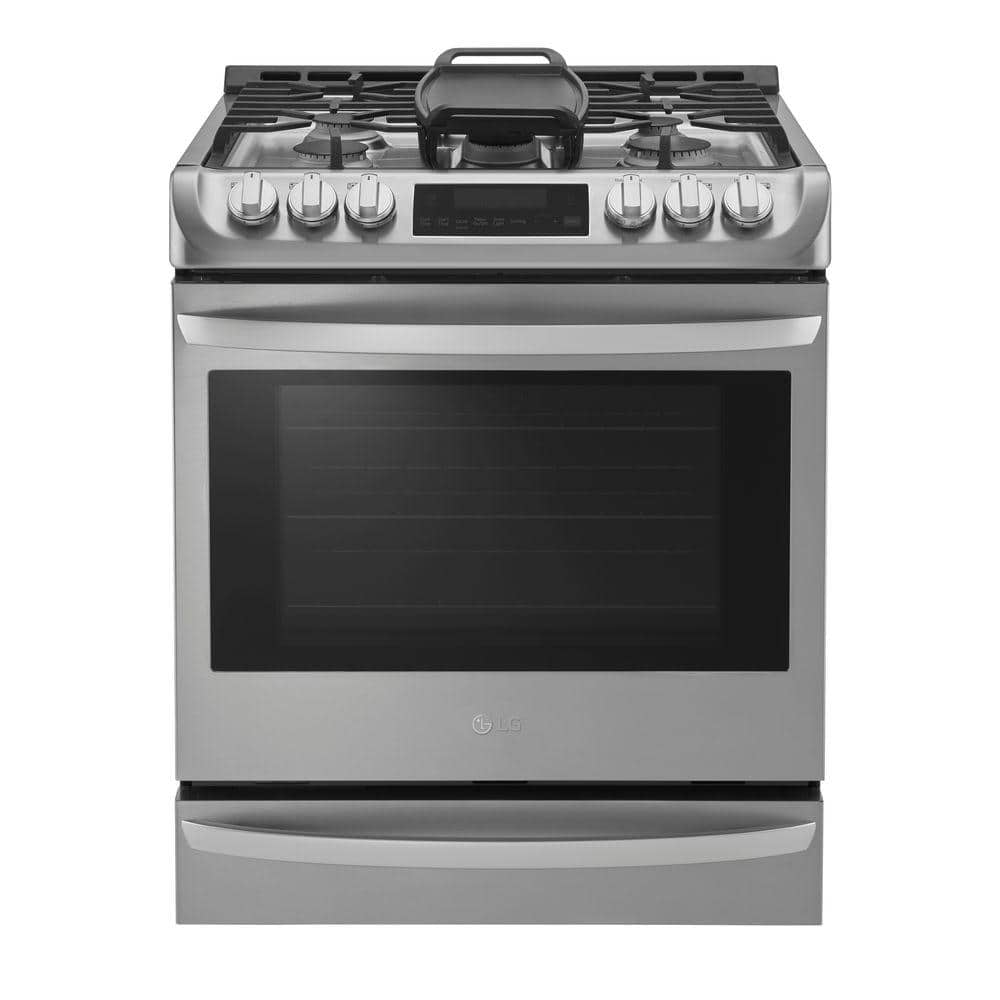
by Chris
Was not installed properly, missing rear trim piece.
by Suzanne
Amazing Range, very happy.
by Aileen
Tried the Air Fry feature, worked great, love the cooktop burners also.
by Katrina
This range exceeds all my expectations. From ease of cleaning to having very accurate temperatures.
by Ann
I am enjoying having 5 burners. I have not used the airfry feature, yet, but I am pleased with oven performance for baking and roasting.
by Barry
Wife loves it. Works and looks great in our kitchen. Cleans up nice and was easy to install.
by Louis
Easy to use, learning all functions is quick & easy, information instructions make sense, easy to follow.
by Bill
we like the styling, accuracy of the heat from the range and the oven
by Doug
We love this stove as compared to our old electric one! I don’t understand what finger print resistant means because we clean fingerprints constantly. But it doesn’t effect how well t works!